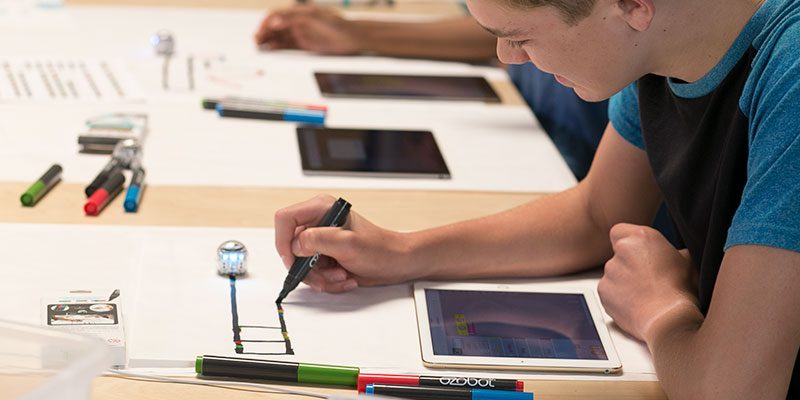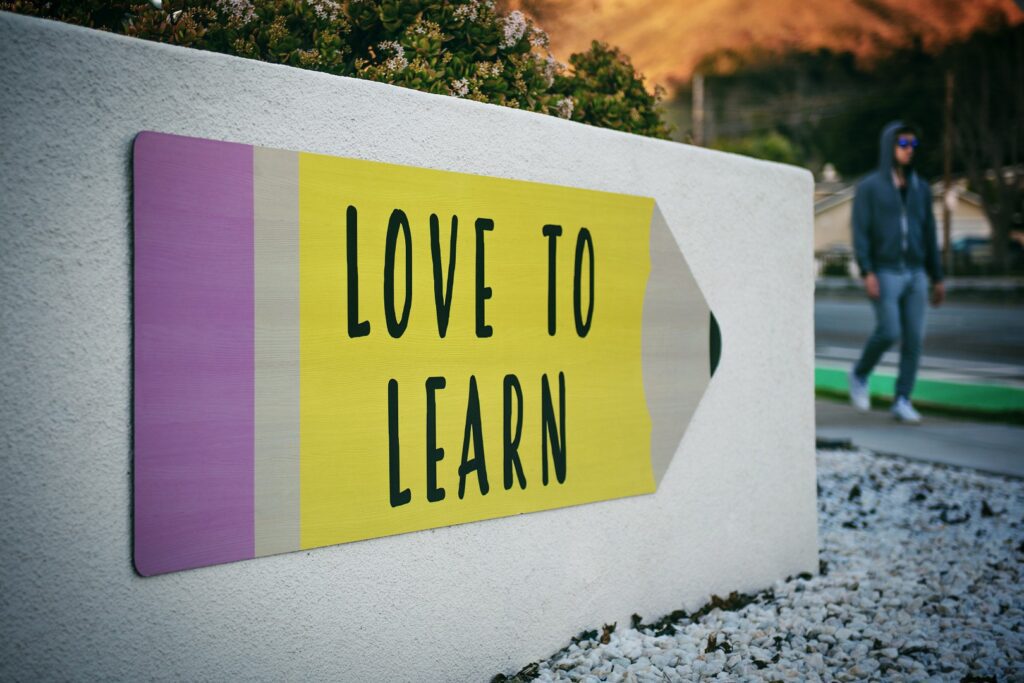Contents
- 1 Unlocking the Power of Visual Learning: Effective Techniques for Visual Learners
- 2 Embracing Your Visual Learning Style: Strategies for Success
- 3 Enhancing Learning with Visual Aids: Tips for Visual Learners
- 4 From Diagrams to Videos: Visual Resources for Optimal Learning
- 5 Tailoring Traditional Techniques: Adapting Learning Methods for Visual Learners
- 6 Boosting Comprehension and Retention: Visual Strategies for Effective Learning
- 7 Unleashing Your Visual Learning Potential: Proven Techniques for Success
- 8 Maximizing Learning Experience: Effective Techniques for Visual Learners
- 9 Engaging the Visual Learner: Techniques for Optimal Learning
- 10 Unleash Your Visual Learning Potential: Mastering the Art of Visual Learning
- 11 FAQs About Effective learning techniques for visual learners
Unlocking the Power of Visual Learning: Effective Techniques for Visual Learners
Have you ever found yourself doodling during a lecture or relying on colorful charts and diagrams to understand complex information? If so, you may be a visual learner. Visual learners have a unique ability to absorb and retain information when it is presented in a visual format. From vibrant images to engaging videos, visual aids have the power to ignite curiosity and enhance learning for individuals with this learning style.
In this article, we will explore the fascinating world of visual learning and uncover effective techniques that can help visual learners excel in their educational pursuits. Whether you are a student, a professional, or simply someone who wants to enhance their learning experience, this guide is for you.
Throughout the article, we will delve into various strategies and resources that cater specifically to visual learners. We will discuss how to embrace your visual learning style, enhance learning with visual aids, and adapt traditional techniques to suit your needs. By the end, you will have a comprehensive toolkit of visual strategies that will unlock your full learning potential.
So, if you’re ready to tap into the power of visual learning and discover how it can revolutionize the way you absorb and retain information, let’s dive in!
Embracing Your Visual Learning Style: Strategies for Success
As a visual learner, you have a unique advantage when it comes to absorbing and retaining information. By understanding and embracing your visual learning style, you can enhance your learning experience and achieve greater success in your academic and professional pursuits. Here are some effective strategies to help you make the most of your visual learning abilities:
1. Utilize Visual Aids
Visual aids are powerful tools for visual learners. Incorporate diagrams, charts, graphs, and images into your study materials to help you visualize complex concepts. For example, if you’re learning about the human body, create a labeled diagram that illustrates the different organs and their functions. This visual representation will make it easier for you to understand and remember the information.
2. Mind Mapping
Mind mapping is a technique that allows you to visually organize your thoughts and ideas. Start with a central concept or topic and branch out with related subtopics. Use colors, symbols, and images to make your mind map visually appealing and memorable. This technique not only helps you understand the connections between different ideas but also aids in recall during exams or presentations.
3. Create Flashcards or Visual Summaries
Flashcards are a popular study tool for visual learners. Create flashcards with visual cues, such as images or diagrams, on one side and key information on the other. This method allows you to associate the visual cue with the corresponding information, making it easier to recall during revision.
Visual summaries are another effective strategy. After studying a chapter or topic, create a visual summary that captures the main points in a visually appealing way. This could be a flowchart, a timeline, or a concept map. By creating these visual summaries, you are actively engaging with the material and reinforcing your understanding.
4. Watch Videos and Tutorials
Visual learners often find videos and tutorials to be highly effective learning tools. Look for educational videos that explain complex concepts in a visual and engaging manner. For example, if you’re studying physics, watch videos that demonstrate the principles through animations or real-life examples. These visual resources can help you grasp the material more easily and retain the information for longer periods.
By embracing these strategies and techniques, you can harness the power of visual learning to enhance your comprehension and retention of information. In the next section, we will explore how visual learners can further enhance their learning experience through the use of visual aids and resources.

Enhancing Learning with Visual Aids: Tips for Visual Learners
Visual aids play a crucial role in enhancing the learning experience for visual learners. By incorporating visual elements into their study routine, visual learners can improve comprehension, retention, and overall academic performance. Here are some effective tips for visual learners to maximize the benefits of visual aids:
1. Use Mind Maps
Mind maps are a powerful tool for visual learners to organize information and make connections between different concepts. Start with a central topic and branch out to subtopics and related ideas. Use colors, symbols, and images to enhance the visual appeal and aid memory recall. Mind maps can be created on paper or using digital tools such as mind mapping software.
2. Utilize Diagrams and Charts
Visual learners can benefit greatly from the use of diagrams and charts to represent complex information. Whether it’s a flowchart, Venn diagram, or bar graph, visualizing data in a structured format helps visual learners grasp concepts more easily. When studying, try to convert textual information into visual representations to enhance understanding.
3. Incorporate Infographics
Infographics are a visually appealing way to present information and can be particularly helpful for visual learners. These graphical representations combine text, images, and data to convey complex ideas in a concise and engaging manner. Seek out infographics related to your subject of study or create your own to reinforce key concepts.
4. Watch Educational Videos
Visual learners can take advantage of the vast array of educational videos available online. Whether it’s a recorded lecture, tutorial, or animated explanation, videos provide a dynamic visual experience that can enhance learning. Look for videos that align with your learning objectives and watch them actively, taking notes and pausing to reflect on key points.
5. Create Flashcards
Flashcards are a tried-and-true study tool that visual learners can utilize to reinforce their learning. Write down key terms or concepts on one side of the flashcard and include a visual representation or mnemonic device on the other side. The act of creating the flashcards itself helps with retention, and regularly reviewing them can reinforce the information in your memory.
By incorporating these tips into their study routine, visual learners can enhance their learning experience and improve their academic performance. In the next section, we will explore how traditional learning techniques can be adapted to suit the needs of visual learners.
From Diagrams to Videos: Visual Resources for Optimal Learning
Visual learners thrive on visual aids that enhance their understanding and retention of information. In this section, we will explore the various visual resources that can be utilized to cater to the needs of visual learners.
Diagrams: Simplifying Complex Concepts
Diagrams are powerful tools that can simplify complex concepts and make them easier to understand. Visual learners can benefit greatly from the use of diagrams as they provide a visual representation of information, allowing for better comprehension. For example, when learning about the human anatomy, a labeled diagram of the different body systems can help visual learners grasp the relationships between different organs and their functions.
Infographics: Condensing Information
Infographics are a popular visual resource that condenses information into a visually appealing format. They are particularly useful for visual learners as they present data and facts in a concise and easily understandable manner. Infographics can be used in various subjects, such as history, science, and even literature, to summarize key points and concepts. For instance, an infographic on the causes and effects of the Industrial Revolution can provide visual learners with a clear overview of this significant historical event.
Videos: Bringing Learning to Life
Videos are an engaging visual resource that can bring learning to life for visual learners. They provide a dynamic and interactive way of presenting information, making it easier for visual learners to absorb and retain knowledge. Educational videos, such as documentaries or instructional videos, can be used to explain complex topics or demonstrate practical skills. For example, a video tutorial on how to solve mathematical equations can help visual learners understand the step-by-step process visually.
By utilizing these visual resources, visual learners can enhance their learning experience and maximize their understanding and retention of information. In the next section, we will discuss how traditional learning techniques can be tailored to meet the needs of visual learners.

Tailoring Traditional Techniques: Adapting Learning Methods for Visual Learners
As a visual learner, you may find that traditional learning methods don’t always cater to your unique way of processing information. However, there are several ways you can adapt these methods to suit your visual learning style. By tailoring traditional techniques, you can enhance your learning experience and make the most out of your visual abilities.
1. Highlighting and Color Coding
One effective way to adapt traditional note-taking methods is to incorporate highlighting and color coding. When reading textbooks or taking notes, use different colors to emphasize key points, definitions, or important concepts. This visual differentiation can help you quickly identify and remember essential information.
2. Mind Maps and Concept Mapping
Visual learners often benefit from organizing information in a visual and hierarchical manner. Mind maps and concept mapping are excellent tools for this purpose. Start with a central idea or topic and branch out with subtopics or related concepts. Use colors, images, and symbols to represent different ideas, making the connections between them visually apparent.
3. Visualizing Information
Visual learners excel at creating mental images to understand and remember information. When studying complex concepts or processes, try to visualize them in your mind’s eye. For example, if you’re learning about the water cycle, imagine the different stages and how they interact. This technique can help you grasp abstract concepts and make them more concrete.
4. Diagrams and Flowcharts
Diagrams and flowcharts are powerful tools for visual learners. Use them to break down complex information into easily digestible visuals. For instance, if you’re studying the human anatomy, create a diagram that labels different body parts and their functions. This visual representation can aid in understanding and retention.
5. Visual Mnemonics
Mnemonics are memory aids that help you remember information through associations. Visual learners can enhance this technique by creating visual mnemonics. For example, if you need to remember the order of the planets in our solar system, you can create a visual image or a story that incorporates the names of the planets in the correct sequence.
By tailoring traditional learning techniques to suit your visual learning style, you can optimize your learning experience and improve comprehension and retention. Highlighting and color coding, mind maps and concept mapping, visualizing information, diagrams and flowcharts, and visual mnemonics are just a few examples of how you can adapt traditional methods to enhance your visual learning abilities.
In the next section, we will explore additional strategies for boosting comprehension and retention as a visual learner.
Boosting Comprehension and Retention: Visual Strategies for Effective Learning
Visual learners have a unique advantage when it comes to comprehending and retaining information. By utilizing visual strategies, they can enhance their learning experience and maximize their understanding of the material. Here are some effective techniques for visual learners to boost their comprehension and retention:
1. Mind Mapping
Mind mapping is a powerful tool for visual learners to organize their thoughts and connect related concepts. By creating a visual representation of information using keywords, images, and colors, they can easily see the relationships between different ideas. This technique helps them grasp the big picture and remember details more effectively.
2. Graphic Organizers
Graphic organizers, such as Venn diagrams, flowcharts, and concept maps, are excellent visual aids for visual learners. These tools allow them to visually organize and categorize information, making it easier to understand complex concepts. For example, when studying history, a visual learner can use a timeline to see the chronological order of events and how they are interconnected.
3. Color Coding
Color coding is a simple yet effective technique for visual learners to enhance their memory and understanding. By assigning different colors to different categories or concepts, they can visually distinguish and associate information more easily. For instance, when studying vocabulary, a visual learner can use different colored highlighters to indicate nouns, verbs, and adjectives, making it easier to remember their meanings.
4. Visual Mnemonics
Mnemonics are memory aids that help learners remember information through associations. Visual learners can take advantage of this technique by creating visual mnemonics, such as drawing pictures or symbols that represent key concepts or facts. These visual cues serve as triggers for their memory, making it easier to recall information during exams or presentations.
5. Diagrams and Infographics
Visual learners thrive when information is presented in a visual format. Diagrams, charts, and infographics are excellent tools for presenting complex information in a visually appealing and easy-to-understand manner. For example, when studying biology, a visual learner can refer to a labeled diagram of a cell to understand its different components and their functions.
By implementing these visual strategies, visual learners can enhance their comprehension and retention of information. The next topic will delve into proven techniques for unleashing the full potential of visual learning.

Unleashing Your Visual Learning Potential: Proven Techniques for Success
As a visual learner, you have a unique advantage when it comes to absorbing and retaining information. By leveraging your visual learning style, you can unlock your full potential and enhance your learning experience. In this section, we will explore some proven techniques that can help you unleash your visual learning potential and achieve success.
1. Mind Mapping: Organizing Thoughts and Ideas
One effective technique for visual learners is mind mapping. This involves creating a visual representation of your thoughts and ideas, allowing you to see the connections between different concepts. Start by writing down a central idea or topic in the center of a blank page. Then, branch out with related ideas and connect them using lines or arrows. This visual representation helps you organize information in a way that is easy to understand and remember.
2. Graphic Organizers: Structuring Information
Another useful tool for visual learners is graphic organizers. These visual frameworks help you structure and categorize information. Examples of graphic organizers include Venn diagrams, flowcharts, and concept maps. By using these tools, you can visually organize complex information, making it easier to grasp and remember.
3. Visual Note-Taking: Enhancing Retention
Visual note-taking is a powerful technique for visual learners. Instead of relying solely on written notes, try incorporating visual elements such as diagrams, symbols, and sketches. This not only makes your notes more engaging but also helps you remember the information better. For example, if you’re learning about the human anatomy, you can draw a labeled diagram of the different body parts to aid in your understanding and recall.
4. Visualization Exercises: Creating Mental Images
Visual learners can also benefit from visualization exercises. Take a moment to close your eyes and create a vivid mental image of the information you’re trying to learn. For instance, if you’re studying a historical event, imagine yourself being present in that moment and visualize the details surrounding it. By engaging your imagination and creating mental images, you can enhance your comprehension and retention of the material.
By incorporating these proven techniques into your learning routine, you can unleash your visual learning potential and achieve greater success. In the next section, we will explore how to maximize your learning experience as a visual learner.
Maximizing Learning Experience: Effective Techniques for Visual Learners
As a visual learner, there are several techniques you can employ to maximize your learning experience. By utilizing these strategies, you can enhance your understanding, retention, and overall comprehension of the material at hand. Here are some effective techniques specifically designed for visual learners:
1. Mind Mapping
Mind mapping is a powerful tool that allows visual learners to organize and connect ideas in a visually appealing way. Start by placing the main topic or concept in the center of the page and branch out with related subtopics. Use colors, symbols, and images to represent different ideas, making it easier for your brain to make connections and remember information.
2. Visual Note-Taking
Traditional note-taking may not be the most effective method for visual learners. Instead, try incorporating visual elements into your notes. Use diagrams, charts, and illustrations to represent key points and relationships between ideas. This visual representation will help you better understand and remember the information.
3. Flashcards and Visual Mnemonics
Flashcards are a tried-and-true tool for studying, and they can be especially effective for visual learners. Create flashcards with visual cues, such as images or diagrams, to associate with the information you’re trying to remember. Additionally, you can create visual mnemonics, which are mental images that help you recall information. For example, if you’re trying to remember the order of the planets, you could create a visual mnemonic by associating each planet with a distinct image or scene.
4. Visualization Techniques
Visual learners can benefit greatly from visualization techniques. When studying, try to create mental images of the information you’re learning. For example, if you’re reading a history textbook, imagine yourself in the historical setting or visualize the events as if they were happening in front of you. This technique can help solidify your understanding and make the information more memorable.
These techniques are just a few examples of how visual learners can maximize their learning experience. By incorporating visual elements, organizing information visually, and utilizing visualization techniques, you can enhance your comprehension, retention, and overall learning outcomes. In the next section, we will explore techniques for engaging the visual learner and creating an optimal learning environment.

Engaging the Visual Learner: Techniques for Optimal Learning
Visual learners thrive when they can engage with information in a visual format. By incorporating visual elements into their learning process, they can enhance their understanding and retention of the material. In this section, we will explore some effective techniques for engaging visual learners and promoting optimal learning.
Utilize Visual Aids
Visual aids are an excellent tool for engaging visual learners. Whether it’s charts, graphs, diagrams, or illustrations, visual aids can help convey complex information in a more digestible and memorable way. When studying a subject, consider creating your own visual aids or seeking out existing ones that align with your learning objectives. For example, if you’re studying the human anatomy, finding a detailed anatomical chart can greatly enhance your understanding of the topic.
Incorporate Mind Maps
Mind maps are a powerful tool for visual learners. They allow you to organize information in a hierarchical and interconnected manner, making it easier to understand relationships between different concepts. Start by writing the main topic or idea in the center of a blank page, and then branch out with subtopics and supporting details. Use colors, symbols, and images to make your mind map visually appealing and memorable. Mind maps can be created digitally using software or apps, or you can go old school and use pen and paper.
Use Visual Mnemonics
Mnemonics are memory aids that help you remember information by associating it with something more memorable. Visual mnemonics take this technique a step further by incorporating visual elements. For example, if you’re trying to remember a list of vocabulary words, you can create mental images that represent each word. Visualizing the images as vividly as possible will make them more memorable and help you recall the information when needed.
Engage in Visual Note-Taking
Visual note-taking is a technique that combines words, images, and diagrams to capture and organize information. Instead of simply writing down text, visual learners can create visual representations of the concepts being discussed. This can involve using symbols, drawings, or even doodles to represent ideas and connections. Visual note-taking not only helps with comprehension and retention but also makes reviewing your notes a more engaging and enjoyable experience.
By incorporating these techniques into your learning process, you can effectively engage your visual learning style and optimize your learning experience. The next section will delve into the importance of maximizing your learning environment for visual learners.
Unleash Your Visual Learning Potential: Mastering the Art of Visual Learning
Congratulations! You have now unlocked the power of visual learning and are well on your way to becoming a master of this unique learning style. Throughout this article, we have explored various techniques, strategies, and resources that can help visual learners like yourself maximize their learning experience. Now, let’s wrap things up with some final tips and suggestions to help you continue on your visual learning journey.
Embrace Your Unique Learning Style
Remember, being a visual learner is a strength, not a weakness. Embrace your unique learning style and use it to your advantage. Visual learners have the ability to process information in a way that others may not, so don’t be afraid to lean into your strengths.
Continuously Adapt and Tailor Your Learning Methods
Learning is a lifelong journey, and as a visual learner, it’s important to continuously adapt and tailor your learning methods to suit your needs. Experiment with different techniques and resources to find what works best for you. Don’t be afraid to think outside the box and try new approaches.
Utilize Visual Resources
Take advantage of the plethora of visual resources available to you. From diagrams and charts to videos and infographics, visual aids can greatly enhance your learning experience. Seek out these resources and incorporate them into your study routine.
Stay Organized
Organization is key for visual learners. Keep your study materials, notes, and resources well-organized and easily accessible. Consider using color-coding systems, mind maps, or visual planners to help you stay on track and retain information more effectively.
Practice Active Learning
Engage in active learning techniques that involve both visual and hands-on activities. This could include creating flashcards, drawing diagrams, or participating in group discussions. By actively engaging with the material, you will deepen your understanding and improve your retention.
Reflect and Review
Regularly reflect on your learning progress and review the material you have covered. Take the time to consolidate your knowledge and identify any areas that may need further clarification or revision. This will help reinforce your learning and ensure that the information sticks.
Never Stop Learning
Finally, remember that learning is a lifelong process. Keep seeking out new knowledge, exploring different subjects, and challenging yourself. As a visual learner, you have the ability to absorb and process information in a unique way, so make the most of it!
By embracing your visual learning style, utilizing visual resources, staying organized, practicing active learning, and continuously seeking out new knowledge, you will be well on your way to mastering the art of visual learning. So, go forth and unleash your visual learning potential! Happy learning!
FAQs About Effective learning techniques for visual learners
Can visual learning techniques help improve my academic performance?
Absolutely! Visual learning techniques can greatly enhance your academic performance. By utilizing visual aids such as diagrams, videos, and visual resources, you can better understand and retain information. This can lead to improved comprehension, recall, and overall success in your studies.
What are some effective visual learning techniques I can try?
There are several effective visual learning techniques you can try. Some examples include creating mind maps or concept maps, using flashcards with images or diagrams, watching educational videos, and utilizing color coding or highlighting to organize information. Experiment with different techniques to find what works best for you.
How can I adapt traditional learning methods to suit my visual learning style?
To adapt traditional learning methods for visual learners, you can incorporate visual aids into your study routine. For example, instead of solely relying on reading textbooks, try finding visual resources such as charts, graphs, or diagrams related to the topic. Additionally, you can create visual summaries or infographics to condense information and make it easier to comprehend.
What are some tips for maximizing my visual learning experience?
To maximize your visual learning experience, it’s important to create a conducive learning environment. Ensure good lighting, minimize distractions, and use a comfortable workspace. Additionally, actively engage with the visual aids by taking notes, asking questions, and discussing the material with others. Regularly reviewing and revisiting the visual resources will also reinforce your learning.

0 Comments